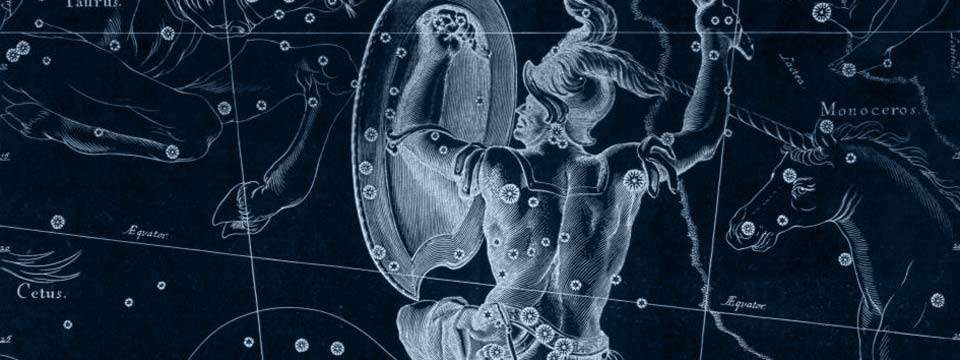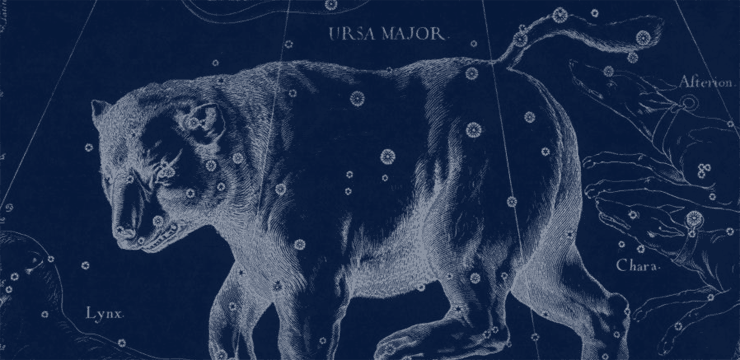
February Constellations & Folklore
February 2011 :
One of the biggest moments for a new astronomy lover is the sudden
realization that we have suddenly connected the stars and found the
constellations, as has happened for generations all around the world.
And, then, to try to remember the figure, we often depend on a story,
or a myth, to keep the stars in their proper position. Very often, we
depend on the ancient European, notably the Greco-Roman stories, to keep
the sky in line.
For example: Orion. most of us depend on one of two myths for him. My
favorite concerns his demise by the scorpion, because of his threat to
kill every living animal. This works beautifully, because Scorpius,
Orion's nemesis, is situated directly opposite Orion in the sky, a sign
of respect for the braggart's killer.
And, then again, we have the love story between Orion and Diana. Much
to the chagrin of her brother Apollo, the couple was about to marry.
Apollo, seeing Orion in the water, challenged his sister, a skilled
hunter, that she couldn't hit the floating thing. She did, but when it
washed upon the beach, and Diana realized she had just killed the love
of her life, she had him placed among the stars .
In Egyptian legend, Orion was Osiris. He symbolized the birth, growth,
death, and rebirth of the natural world. He was murdered and dismembered
by his jealous brother, Seth, then briefly brought back to life by his
sister and consort Isis,in order to father the god Horus.
Go to Japan, and it will appear to be a double-sided drum, with the belt
stars the smaller, waistlike central portion. This is rather similar
to many people today, who believe it resembles an hourglass. Or, to
others, it is a kimono sleeve; when the geisha raises her arm, the
resultant image gracefully drapes downward.
Coming home to the U.S., the different American Indians saw Orion
differently. In theTewa tribe of New Mexico, Orion was Long Sash, who
led their people on a long journey to freedom. The Navajo saw Orion as
the First Slim One, or the First Slender One. They planted their crops
when it set at dusk, in early May.
Oregon's Wasco Indians saw Orion's belt as three fishermen in a canoe,
with his sword as three fishermen in another canoe. The canoes were each
racing to catch a dead salmon, which was represented by a star between
the belt and sword. In that part of the country, cold winds originate
from the north, and warm Chinook winds originate from the southwest. So
the canoe to the north of the salmon, the belt stars, represented the
cold wind. The sword stars, located to the south and slightly west of
the salmon, form the canoe that represented the Chinook wind.
Same stars, different images. When you look up and enjoy the beauty of
the constellations, use your imagination and come up with a picture and
myth of your own. As you can see, the possibilities are endless.
When to Observe
Related Topics




